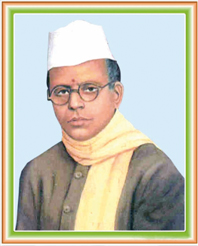HERITAGE - Music of Kamrup: diverse and splendid by MITRA PHUKAN

The richness and diversity of life in Assam, its culture and its people are amazing. The sheer variety of ethnicities found in these hills, valleys and plains has given rise to a beautiful amalgamation of unique cultures across this verdant land. And nowhere is this cultural diversity more apparent than in the music of the area. Indeed, if one travels on a musical journey down the length of the Luit and then through the valley of the Barak, the sheer range of music and the musicality of the State’s people cannot fail to enchant.
Starting from Eastern Assam (popularly known as Upper Assam), down to the westernmost district of Dhubri, in Lower Assam, and sweeping into the Barak Valley, the music-minded traveller encounters a wide range of melodies, instruments and genres. There are distinct differences that can easily be noticed in the traditional and folk music of each part of the State. Obvious, also, are the myriad influences that have moulded the various genres found here. Starting from influences from regions to the east of India – Myanmar, Thailand and China – to inspirations garnered from Bangladesh, Bengal and places farther west of this region, this State is a melting pot of musical influences.
SPOTLIGHT - Dance India Asia Pacific 2013 - A veritable dance feast in Singapore by VAISHNAVI ANAND

Dance India Asia Pacific 2013, returning for its second exciting season, was organised in Singapore by Apsaras Arts Ltd. in collaboration with MilapFest, UK and Esplanade – Theatres on the Bay and supported by Singapore’s National Arts Council. Dance India is a dance education programme offering students, performers and teachers of Indian classical dance a rare opportunity to interact with and learn from renowned dance practitioners and scholars from India. The inauguration of the six-day dance extravaganza was held on 4th June at Goodman Arts Centre, Singapore. The evening started off with a Shanmukha Kavutvam presented by students of Dance India 2012. The welcome address by K. Kesavapani (Singapore’s Ambassador to Jordon), was followed by a presentation by Prashant Nayak, Founder and Director, MilapFest, UK, who took us through the journey of MilapFest, from its inception to where it stands today. He said “Dance India is an international movement that seeks to dynamise and strengthen the teaching and performing of Indian Dance in all its forms”. He added that MilapFest “aims to support professional development of aspiring performers outside of India – both musicians and dancers.”
Core training programme
There were four different core training programmes – Intermediate Bharatanatyam conducted by Mythili Prakash, Advanced Bharatanatyam by Priyadarsini Govind, Bharatanatyam Teacher’s Training by Leela Samson and Intermediate Odissi by Madhavi Mudgal. Each was an intense and rigorous effort to establish perfection, grace and completeness in the dance.
ART-STAMPS - Patriot and promoter of arts - S. Satyamurti by S. SANKARANARAYANAN

S. Satyamurti was one of the stalwarts of the Indian National Congress during the pre-Independence years. He was a famous lawyer, renowned orator, debater and brilliant parliamentarian. For his uncommon courage, he earned the appellation “Dheerar”. He was also a theatre personality, and a connoisseur and promoter of the performing arts.
Stamp on Satyamurti
The Department of Posts issued a commemorative stamp in honour of S. Satyamurti on 22 August 1987. It is in den. of 60 P, perf. 13, multi-coloured, and was printed on un-watermarked PG Matt coated paper by photogravure process at India Security Press, Nasik.
The stamp has a portrait of Satyamurti wearing a Gandhi cap, like all congressmen of his time. The First Day Cover also carries his picture.
His life
The short biography that follows is largely based on the excellent study titled Life of Satyamurti by P.G. Sundararajan (South Asian Publishers).
Satyamurti was born on 19 August 1887 in Tirumayam village in the erstwhile principality of Pudukottai in Tamil Nadu. After schooling at Pudukottai, he graduated from Madras Christian College, and later passed law examination in first class. He worked initially in the chambers of V.V. Sreenivasa Iyengar and later with S. Sreenivasa Iyengar, former President of the Indian National Congress.
OUR GURU - End of an era in dhrupad by RAMAKANT AND UMAKANT GUNDECHA

The passing away of its Grand Master, Ustad Fariduddin Dagar, has marked the end of an era in dhrupad.
It was our good fortune that we became his disciples at a time in his life when he was at the peak of his creativity, when his musical artistry was at its highest. This was also the time when Ustad had been recognised as a guru and the quality of his teaching had established him as such.
He believed that dhrupad musicians were themselves responsible for allowing dhrupad to slip into the background. To restore it to its original form he took the help of his elder brother, Ustad Zia Mohiuddin Dagar, to shoulder the responsibility of taking dhrupad forward together.
After Ustad Behram Khan of the Dagar gharana, in the recent past, the exemplary work of these two ustads in the teaching of dhrupad will always be remembered. Almost all their disciples were from outside their family. This fact is in itself exceptional. They never propagated the notion that dhrupad is an exclusive art, difficult to master and out of reach for the layman. On the contrary, they took people like us, ordinary students, under their wing and imparted exceptional knowledge to us, thereby lifting not only our reputation but that of dhrupad itself.


